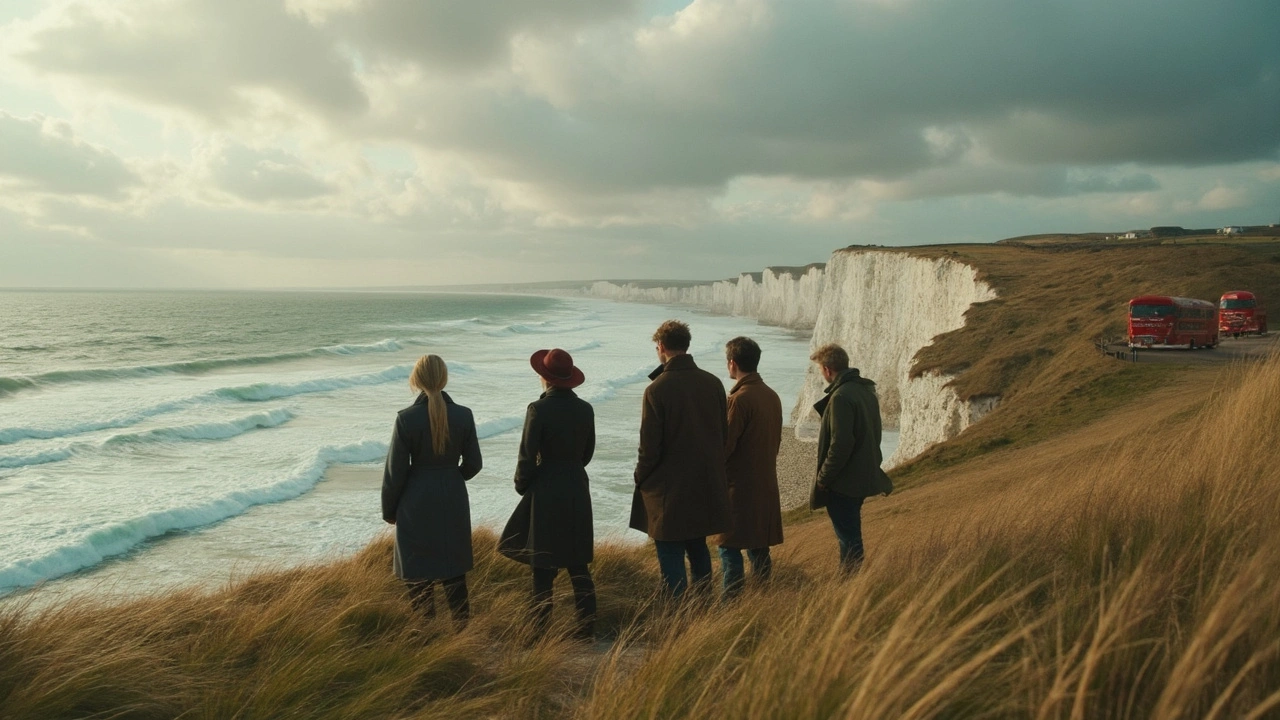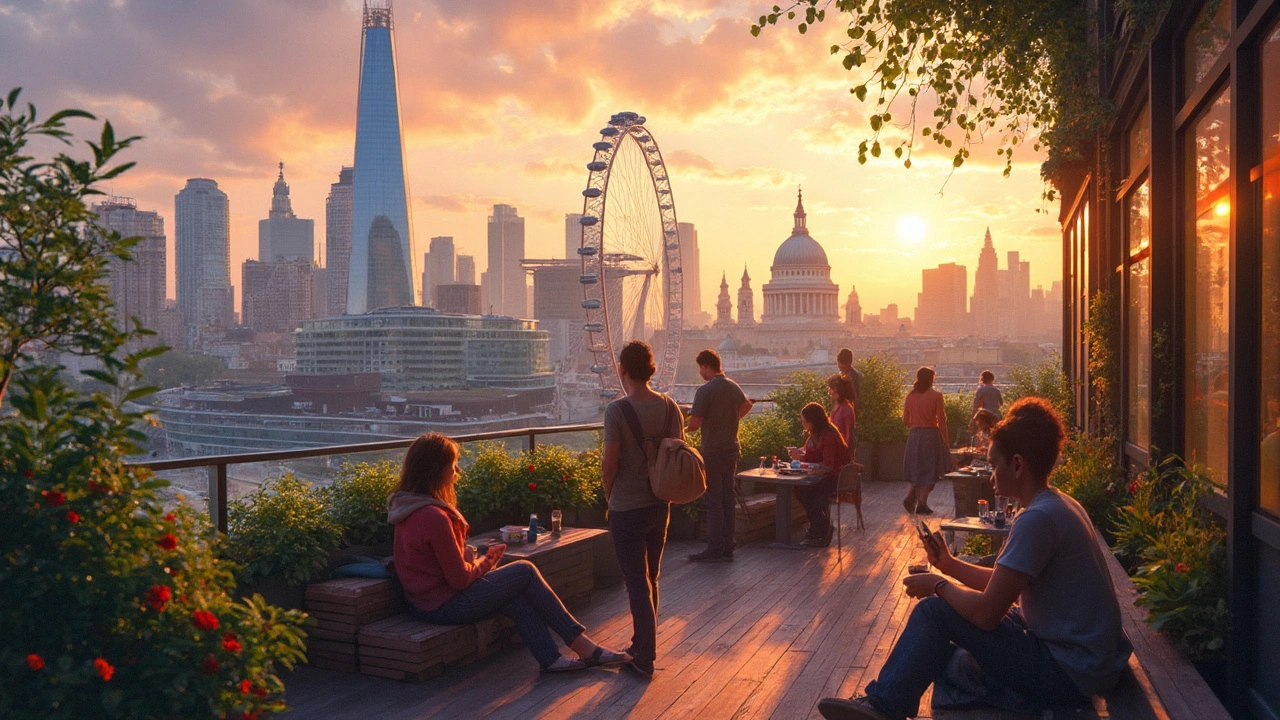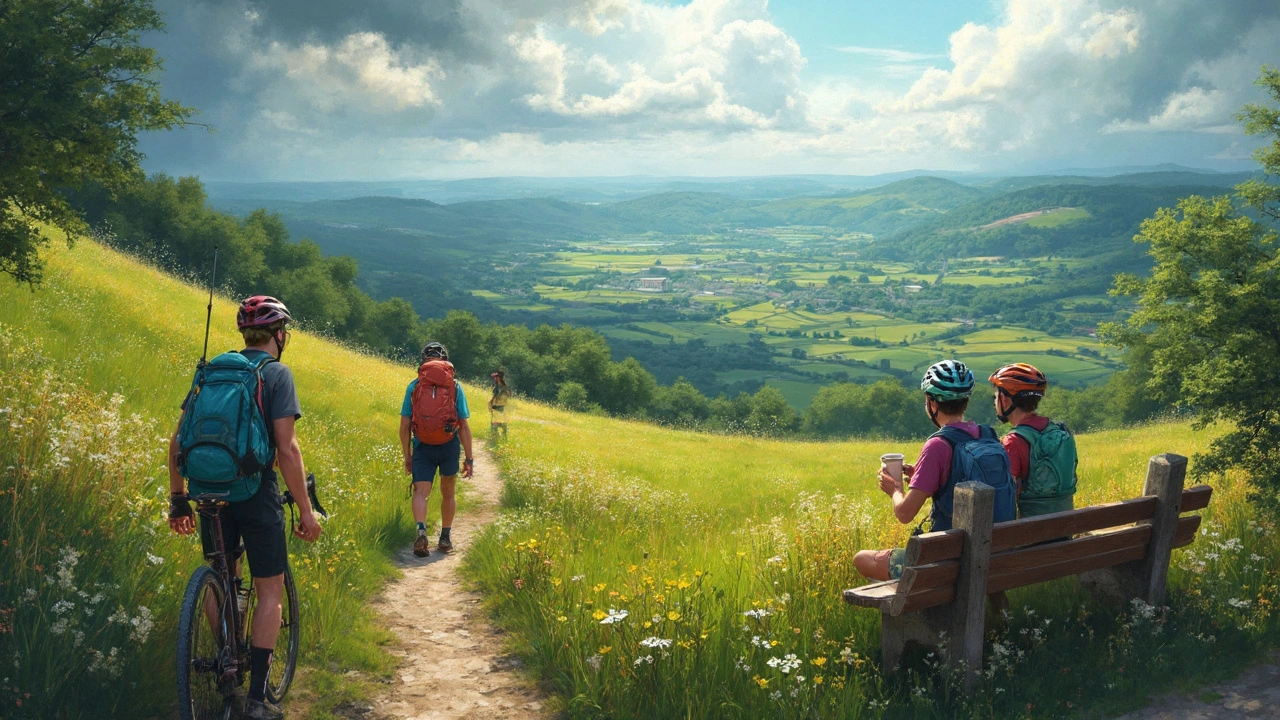London's Best Dramatic Cliffs and Scenic Viewpoints for Epic Adventures

Ask anyone living in London what they most crave, and don’t be surprised if it’s fresh air and a jaw-dropping view. It only takes one rainy commute or a week of endless building sites before our city-hearts start yearning for something wilder—impossibly green hills, thunderous seas from the edge of a cliff, or London’s own rooftops aglow at sunset. Despite its famously flat cityscape, London offers easy gateways to some seriously dramatic cliffs and spectacular viewpoints, all within reach by train, car, or sometimes just a brisk Tube ride. If you think cliff-hugging hikes and panoramic horizons are only for distant seaside escapes, think again.
Clifftop Wonders and Wild Landscapes Near London
The English landscape is just showing off when it comes to dramatic cliffs. For Londoners hungry for epic views and salty sea breezes, the chalk cliffs of the south coast are a dream come true. Just hop on a train from Victoria Station, and in under two hours, you could be standing atop the Seven Sisters—probably the most famous and Instagrammed white cliffs near London. These undulating giants rise over the English Channel and offer crazy photo ops, especially when the sun cracks through the clouds. The walk between Seaford and Eastbourne runs the full length of the cliffs and takes about 5 hours. If that sounds like a stretch, you can simply explore one or two sisters for the perfect picnic-with-a-view. Fancy knowing which cliff is safest to snap that edge-selfie? Always stick to marked paths and keep well back—recent stats from the RNLI show increasing rescue callouts due to tourist misadventures.
Just down the coast, Beachy Head near Eastbourne wins the crown as the highest chalk cliff in Britain, towering 162 metres above crashing waves. Locals recommend grabbing fish and chips at The Beachy Head pub after your trek. Beachy Head is also a historical hotspot—its lighthouse has appeared in countless films, and its tragic past is reflected in discreet emergency telephones dotting the cliff top. This place is raw and powerful, no gloss. Come for windswept drama, but respect the surroundings: it’s beautiful, fragile, and dangerous in wild weather. In summer, you might spot paragliders catching thermals, while winter brings spectacular waves and moody skies that make even the most jaded Londoner feel tiny and exhilarated.
If you prefer gentler vibes, try the Isle of Wight. The Needles, a striking row of chalk stacks at the far west, are visible after a scenic ferry ride from Portsmouth. The viewpoint at Alum Bay is perfect—on clear days, you’ll see all the way to Old Harry Rocks in Dorset. If you're an adrenaline junkie, the island has an annual Walking Festival every spring, with guided routes that make the most of its clifftop glory. If you’re car-free, Southern Vectis buses get you from ferry to viewpoint quickly. And if you’ve come for the shots, arrive late afternoon when the sun paints the cliffs gold.
Epic Views Closer to Home: London’s Urban Highs
Cliff walks aren't the only answer for Londoners craving epic viewpoints. Some of the city’s most scenic spots come with cocktails, gallery openings, or a simple stroll through a park. Forget tourist-trap queues at The Shard and London Eye. The real magic happens in the places locals swear by (and secretly hope remain uncrowded). Primrose Hill in Regent’s Park gives you a panoramic view across the city’s rooftops, with the glassy spires of Canary Wharf poking above the trees and the BT Tower standing tall. At sunrise or late afternoon, it’s a beloved spot for dog walkers, runners, and picnicking families. Hampstead Heath’s Parliament Hill is a little wilder and more rugged—there’s a reason poets from Keats to Plath came here looking for inspiration.
If you’re after a heady blend of history and vista, head up to Alexandra Palace—“Ally Pally” if you want to sound local. The view over North London is legendary, especially during November’s fireworks displays or the summer beer gardens. On clear days, you can spot the skyline from Wembley’s arch all the way to the Shard. For an urban vibe with a side of luxe, the rooftop bars of Shoreditch and The City (think Aviary, Madison, or Sky Garden) serve up skyline sunset views with cocktails—no muddy boots required. It's the perfect way to unwind after a day dodging red buses and tourists in Covent Garden. And if you're a photographer or content creator, check @LondonViewpoints on Instagram for regular tips on hidden rooftops and pop-up terraces around the city.
One more hot tip for city explorers: the Walkie-Talkie building’s Sky Garden. Free tickets must be booked in advance, but you’re rewarded with jaw-dropping 360° cityscapes from lush indoor gardens, and you can nurse a coffee while soaking up London’s sprawl. As the sun melts into the horizon, the glass-walled deck becomes a front-row seat for city lights flickering on across historic and modern landmarks. According to Time Out London, the Sky Garden is now “the local’s favourite way to show off our city”—and who are we to argue?

Best Walks, Cycling Routes, and Adventure Tips
If you want your scenic viewpoint with a side of cardio, the South Downs Way is a winner. Starting just outside Lewes, this 100-mile National Trail shows off cliff-top drama, rolling hills, and deep green valleys. You don't need to walk the whole thing—just the section from Alfriston to Eastbourne offers popping views all day. The official South Downs National Park site recommends sturdy boots and waterproofs, even in June, since British weather does what it likes. Cycling fans won’t feel left out: rent an e-bike in Brighton and cruise up onto Devil’s Dyke for a countryside panorama that’ll make you forget the city for an afternoon. Devil’s Dyke is another local legend—not actually a cliff, but a huge V-shaped valley on the edge of the Downs, with killer views down to the coast. There’s a pub here too, so you can top off your ride with a cold pint of local ale. Here’s a quick look at some popular access points and routes for Londoners:
| Location | Travel Time from London | Activity | Best Time to Visit |
|---|---|---|---|
| Seven Sisters | 1hr 45m (train) | Walking/Hiking | Spring/Early Autumn |
| Beachy Head | 2hr (train) | Walking/Views | All Year, avoid storms |
| Isle of Wight (The Needles) | 2hr+ (train/ferry) | Walking/Photography | Late Spring/Summer |
| Devil’s Dyke | 1hr 20m (train/bus) | Cycling/Walking | Summer/Autumn |
| Primrose Hill | 20m (Tube) | Urban View | Year-round |
If you’re looking for something edgier, book yourself a guided abseil down Peacehaven Cliffs or Go Ape’s tree-top experience at Battersea Park—yes, you can swing through the canopy in the middle of London. Several adventure groups like Black Girls Hike and The Adventurous Ewe organise regular outings for Londoners, encouraging everyone to try wild spaces without the intimidation factor. It’s worth signing up for their newsletter or following on social to snag upcoming group trips.
- Always check the weather, especially for cliff-top walks; storms can be fierce, and tides matter for coastal routes.
- Pack layers—it can be ten degrees cooler on a wind-lashed headland than outside your London flat.
- Travel light but bring enough snacks and water; village cafes close early, and cliff paths rarely have shops.
- Respect signs, fences, and boundaries—cliff erosion is a real (and dangerous) issue in southern England.
- Download OS Maps or the AllTrails app before you go; signal is patchy on remote walks.
Nature, Wildlife and a Little History Along the Way
One reason Londoners rave about cliff walks is the wildlife. Along the South Downs, it’s not unusual to spot red kites circling above, their forked tails clear against the sky. Clifftop meadows come alive with wildflowers—bluebells, sea thrift, and rare orchids—especially in May and June. Down below, you might glimpse grey seals bobbing off the coast or, if you’re lucky, a pod of bottlenose dolphins leaping offshore near the Isle of Wight. Ask a local birder about the rare razorbill colonies and you might just get an impromptu wildlife tour. The National Trust manages many of these spots, ensuring paths stay open and rare habitats are protected, so picking wildflowers or disturbing nesting birds is a big no-no.
History buffs get their fill too. The South Coast’s chalk ridges have seen invading Romans, medieval smugglers (Beachy Head caves are legendary), and even secret World War II operations. The Seven Sisters have starred in films from “Robin Hood: Prince of Thieves” to “Atonement,” British pop culture writ large on their pale flanks. “The cliffs of England are storybooks written in stone,” says naturalist and writer Julian Dowdeswell, captured in a recent BBC feature.
“Their drama isn’t just geological—it’s deeply human, woven into the fears, dreams, and holidays of generations.”Today, coastal groups track erosion rates carefully; in recent years, about 70cm of cliff is lost to the sea each year at Birling Gap alone. It’s a living landscape, never standing still.
Closer to London, Parliament Hill was once a defensive lookout and is surrounded by ruins of ancient wells and mounds—perfect for little explorers and history-loving grown-ups alike. Alexandra Palace was the site of the world’s first public television broadcast in 1936, its high perch now crowned by an ice rink, outdoor cinema screens, and the Great British Beer Festival every summer. Rooftop gardens on the Walkie-Talkie and Trellick Tower are fuelled by a new London passion for urban greening: not just for the Insta, but for cleaner air, calmer minds, and a taste of the wild above city noise.

Planning Your Escape: Practical Advice for London Explorers
Londoners are famously good at squeezing adventure into tight schedules, and trips to cliffs or viewpoints are no exception. Even a half-day outing can reboot your mood, so long as you plan the details. For coastal trips, save on costs with a Railcard—off-peak Southeastern or Southern train tickets can save you a bundle, and kids travel at huge discounts outside commuter hours. Everyone jokes that “the entire city leaves London on sunny weekends”—it’s true, stations like London Bridge and Victoria can be packed. Book tickets ahead and set off early to snag a seat.
Public transport links are generally good, but rural buses may be infrequent: check times on Traveline before you set out. If you’re cycling, Great Western Railway and Thameslink lines are your friends for bike-friendly trains. Car hire is handy for exploring remote beauty spots, but parking near popular cliffs can be pricey. Consider a lift share with BlaBlaCar or a Zipcar weekend rental for more flexibility.
Don’t underestimate British weather: June can mean blazing sun or two hours of cold sideways rain. Always bring a jacket, suncream, and a charged phone, plus a backup plan for a café or gallery in case of drizzle. The National Trust, English Heritage, and London’s own parks have brilliant apps with up-to-date opening hours and events—worth downloading before you go. Bring cash for rural tearooms (yes, some places still ignore card readers), but most urban rooftops are contactless and happily accept Apple Pay.
Accessibility is getting better every year. Many London parks offer all-terrain wheelchair hire, and several cliff paths now have gentle slopes or step-free viewing platforms—check local council sites for updates. Solo adventurers looking to meet fellow sightseers should try Meetup’s “London Day Trips” or “Photography Lovers UK” groups, which regularly host viewpoint hikes with city-friendly start times.
Above all, the most dramatic spots are worth seeing more than once. Sunsets change daily, tides reveal new angles, and every season paints the land a different colour. Whether it’s city lights from a rooftop or wild spray at Beachy Head, Londoners know exactly how to find fresh perspective—sometimes you just need to look up and get going.